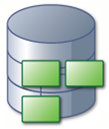
The envelope, please...
The awards for the Top 5 most popular OTN articles written by members of the OTN architect community for the month of February 2014 go to...
- Cookbook: Installing and Configuring Oracle BI Applications 11.1.1.7.1
by Mark Rittman![]() and Kevin McGinley
and Kevin McGinley![]()
A step-by-step guide to installing, configuring, and loading an initial set of tables within Oracle BI Applications 11.1.1.7.1, using data sourced from Oracle E-Business Suite 12.1. - Enterprise Service Bus
by Jüergen Kress, Hajo Normann![]() , Danilo Schmiedel
, Danilo Schmiedel![]() , Guido Schmutz
, Guido Schmutz![]() , Clemens Utschig-Utschig, Torsten Winterberg
, Clemens Utschig-Utschig, Torsten Winterberg![]() , and Bernd Trops
, and Bernd Trops
Answers to some of the most important questions surrounding the use of an enterprise service bus, using concrete examples to clarify correct areas of application. Part of the Industrial SOA article series. - Making the Move from Oracle Warehouse Builder to Oracle Data Integrator 12c
by Stewart Bryson![]()
Stewart Bryson's detailed guide to a phased migration to Oracle Data Integrator 12c that makes use of the integration and migration capabilities in ODI 12c. [Special Note: Congratulations to Stewart on his recent confirmation as an Oracle ACE Director!] - Back Up a Thousand Databases using Enterprise Manager Cloud Control 12c
by Porus Homi Havewala
Learn how to use Oracle Enterprise Manager Cloud Control 12c as a faster and more efficient alternative to Unix shell scripting and cron jobs for backing up multiple databases. - Starting and Stopping a Java EE Environment when using Oracle WebLogic
by René van Wijk![]()
Oracle ACE Director and Fusion Middleware specialist René van Wijk explores ways to simplify the life-cycle management of a Java EE environment through the use of scripts developed with WebLogic Scripting Tool and Linux Bash.
NOTE: The articles listed here were among the 38 tech articles written by members of the OTN architect community and published to date in the current fiscal year, which began on June 1, 2013. Winners are determined by the number of page visits.
For a complete list of recent articles written by members of the OTN architect community, click here.
Thought for the Day
"When one door closes, another opens; but we often look so long and so regretfully upon the closed door that we do not see the one which has opened for us."—Alexander Graham Bell, scientist, inventor, engineer
(March 3, 1847 – August 2, 1922)Source: brainyquote.com









 The optimized Oracle SuperCluster engineered system includes Oracle Exadata, Oracle Solaris 11, ran batch jobs 1.5x faster
as compared to the former IBM AIX platform, which was consolidated to Oracle SuperCluster.
The optimized Oracle SuperCluster engineered system includes Oracle Exadata, Oracle Solaris 11, ran batch jobs 1.5x faster
as compared to the former IBM AIX platform, which was consolidated to Oracle SuperCluster. 








